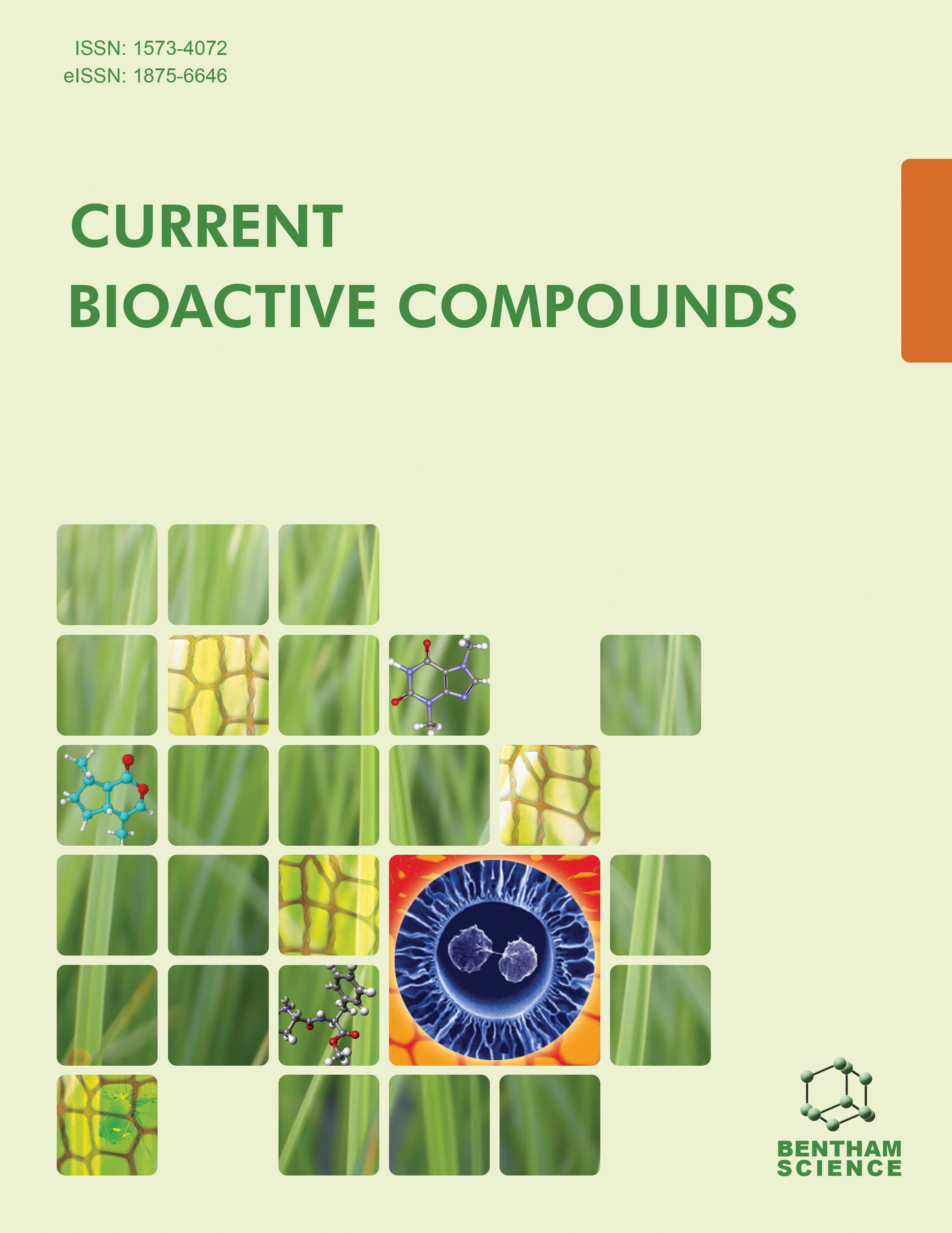- Home
- A-Z Publications
- Current Bioactive Compounds
- Previous Issues
- Volume 3, Issue 1, 2007
Current Bioactive Compounds - Volume 3, Issue 1, 2007
Volume 3, Issue 1, 2007
-
-
Editorial
More LessAuthors: Atta-ur-Rahman and M. Iqbal ChoudharyStructural diversity is the most important fundamental in the modern drug discovery program. Every structural type, in principal, is capable of locking a particular disease mechanism. Everyday in various laboratories of the world, thousands of structurally diverse compounds are synthesized or isolated from natural sources. This structural diversity, if properly harnessed, can lead to breakthrough discoveries and improve, curr Read More
-
-
-
Spongiane Diterpenoids
More LessIn this review we cover the structures, occurrence, biological activities and synthesis of all the spongianes and rearranged spongianes since their discovery in 1974. We have given special attention to structure revisions and biological properties of these polycyclic terpenoids of exclusive marine origin. However, an important part of the review describes the synthetic efforts in the field. Thus, this part has been subdivided into synt Read More
-
-
-
Podophyllotoxin: Current Perspectives
More LessAuthors: Ying Qian Liu, Liu Yang and Xuan TianPodophyllotoxin is a naturally occurring lignan with important antineoplastic and antiviral properties and supported by detailed understanding of their mechanism of action, and facilitated by chemical manipulations that have amplified their bioactivity, the podophyllotoxin analogues have advanced to the forefront of several areas of therapeutic and developmental chemotherapy. Additive and synergistic laboratory interact Read More
-
Volumes & issues
-
Volume 21 (2025)
-
Volume 20 (2024)
-
Volume 19 (2023)
-
Volume 18 (2022)
-
Volume 17 (2021)
-
Volume 16 (2020)
-
Volume 15 (2019)
-
Volume 14 (2018)
-
Volume 13 (2017)
-
Volume 12 (2016)
-
Volume 11 (2015)
-
Volume 10 (2014)
-
Volume 9 (2013)
-
Volume 8 (2012)
-
Volume 7 (2011)
-
Volume 6 (2010)
-
Volume 5 (2009)
-
Volume 4 (2008)
-
Volume 3 (2007)
-
Volume 2 (2006)
-
Volume 1 (2005)
Most Read This Month
Article
content/journals/cbc
Journal
10
5
false
en

Most Cited Most Cited RSS feed
-
-
Podophyllotoxin: Current Perspectives
Authors: Ying Qian Liu, Liu Yang and Xuan Tian
-
- More Less

